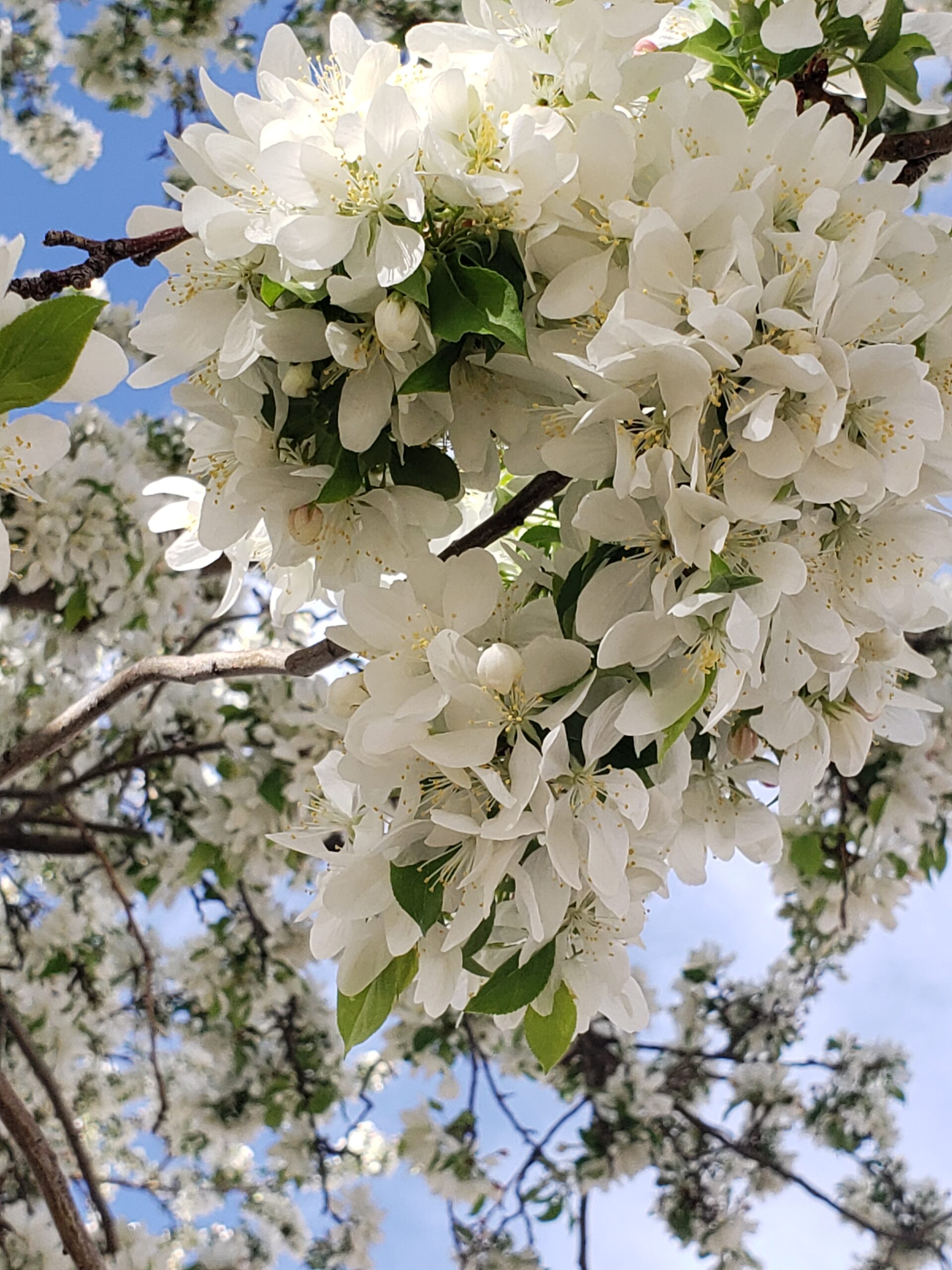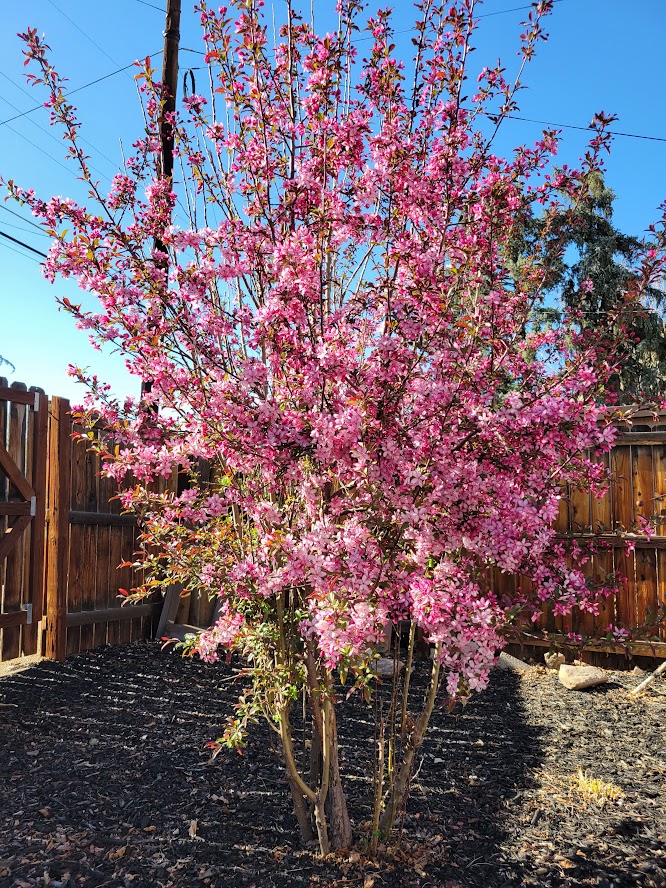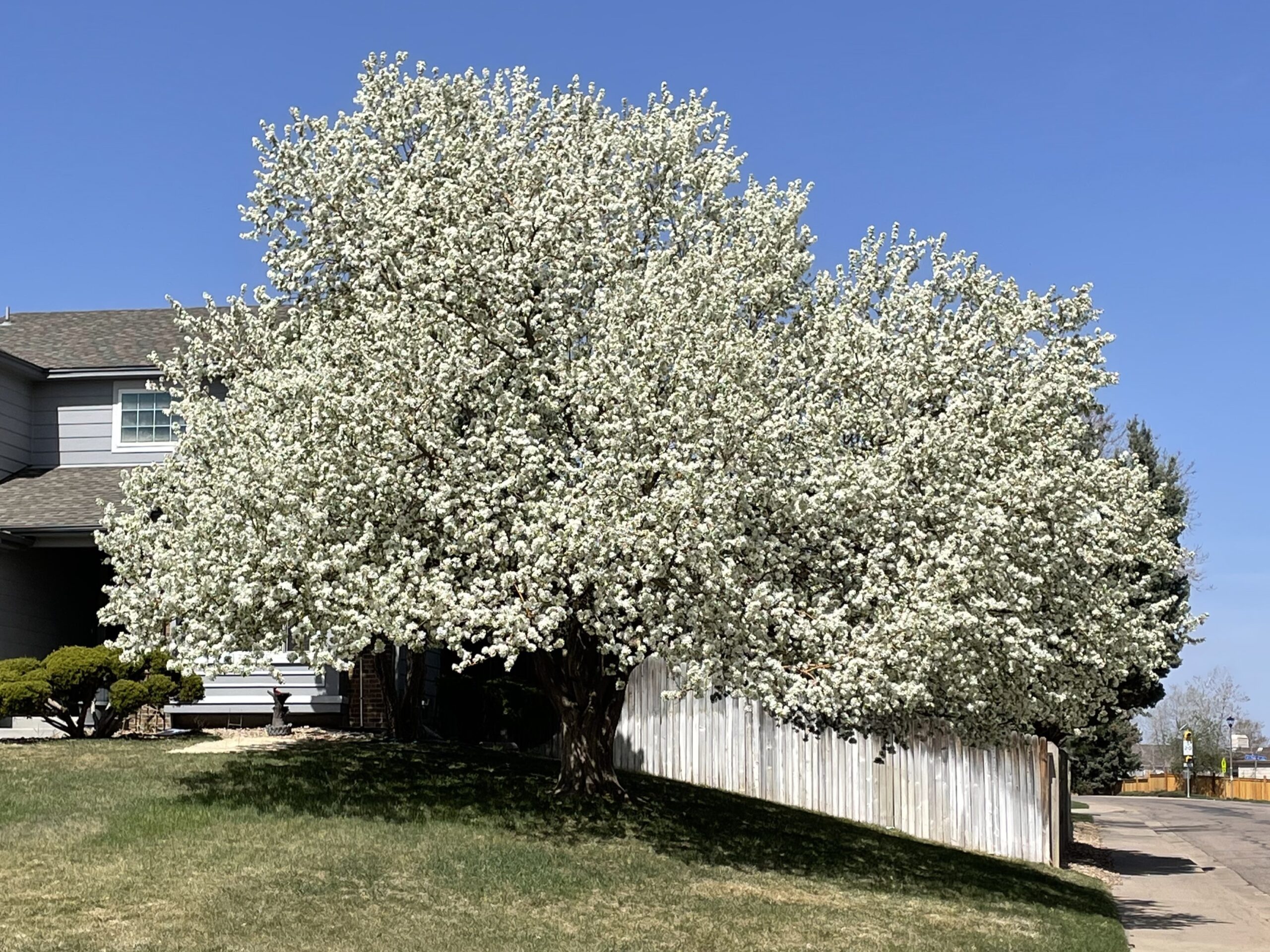


The Front Range of Colorado area is known for its crabapple blooms in April and May, but these medium-sized ornamental trees can be grown in landscapes throughout much of Colorado. Some varieties can even be grown at 8,000 feet elevation.
What are crabapples?
Crabapples are defined as apples with fruit smaller than two inches in diameter. The fruit can be used for jams, jellies and sauces. Crabapples are primarily grown for their spring flowers, which are white, pink, rose or red. Their foliage may vary from green to bronze to purple. Some develop fruits that last into the winter while other varieties are sterile and rarely develop fruit.
What do crabapple trees look like?
In the fall, crabapple tree foliage may be red, orange or yellow. Some have reddish bark when they are young and others develop bark that becomes gray, patchy and mottled with age. The growth patterns of this tree vary as well: although most grow about 20 feet tall and quite wide, some are more compact.
What diseases can crabapple trees get?
Crabapple diseases of the most concern in Colorado are fireblight, powdery mildew, apple scab and juniper-apple rust. Select a variety for your landscape based on physical traits, temperature hardiness and disease resistance. Crabapples usually send up suckers next to the trunk, which need to be trimmed back regularly. Like most fruit trees, they are attractive to deer, so they may have to be fenced in until mature.
Over the past 25 years, Colorado State University’s Department of Horticulture and Landscape Architecture has evaluated most crabapple varieties for ornamental characteristics and disease resistance. Several have performed well and show excellent overall disease resistance include Adams, Louisa, Centurion, Profusion, David, Ralph Shay, Doubloons, Red Splendor, Robinson, Jackii and Velvet Pillar.
For more information, see the following Planttalk Colorado™ video(s).
For more information, see the following Colorado State University Extension reference materials:
- Flowering Crabapple Trees
- Powdery Mildews
- Fire Blight
- Trees and Shrubs for Mountain Areas
- Small Deciduous Trees



